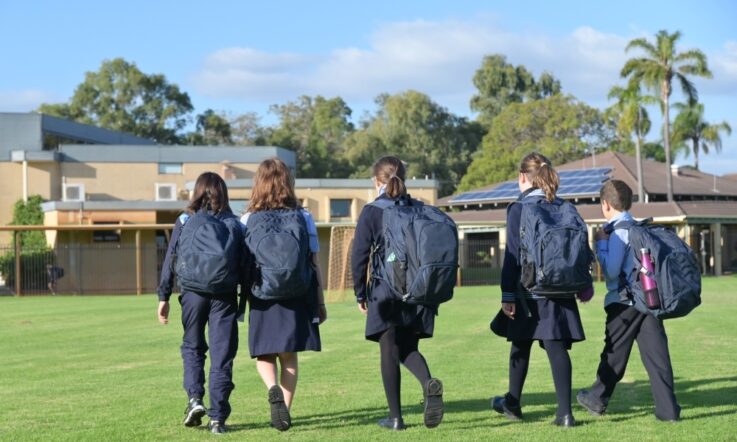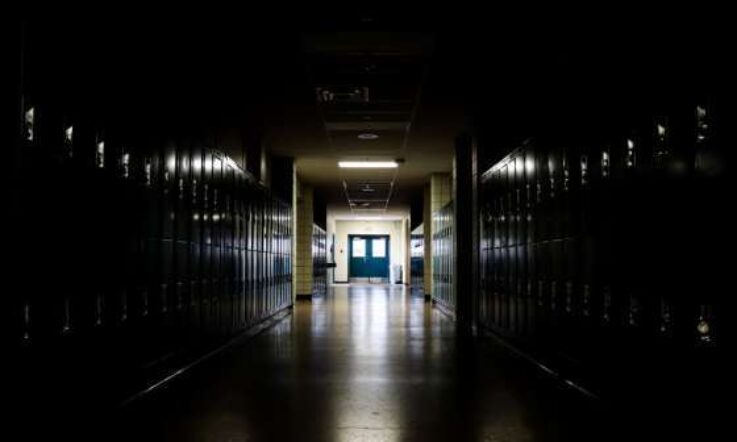Although it will be some time before the effects of lockdowns on students are fully understood, recent studies have shown that learning loss during the pandemic was most pronounced among socioeconomically disadvantaged students and schools (Ikeda & Echazarra, 2021).
The switch to a home learning model required leaders and teachers to draw on their networks to navigate the best way to keep their students safe, happy, and curious to learn. Hearing from educators about what worked for them and their school community can inform planning for future online learning scenarios.
Social Ventures Australia has developed The Connection – a network of high-performing school leaders. Together, they work in some of Australia’s most challenged communities, including many that experienced high COVID-19 case numbers and the most severe lockdowns. All the leaders in the network actively commit to a common vision of outstanding education and successful social outcomes for each and every student – meaning they support, share and leverage ideas across schools and states.
Leaders in The Connection who are working at the coalface of socioeconomic disadvantage have been reflecting on what’s happened in their own school community since the start of the pandemic so that they can share their insights and experiences with others. Here, we’ve collated their top five recommendations.
1. Connection is key
Humans crave connection. Students who report a stronger sense of school belonging are more likely to see value in education and hold higher education aspirations (Toledo Figueroa, 2021). In times of disruption and lockdown, ensuring sufficient resources to maintain that sense of connection and belonging can be very difficult, with teachers already managing increased workloads.
One Connection school in a rural community enlisted the support of the parish chaplain to maintain contact with families. With the principal, they would call families on a regular basis and, taking restrictions and social distancing requirements into account, stand at the school gate when students came by to collect their work packs.
Another school used the distributing of electronic devices during the first weeks (through pick up or delivery to homes in a COVID-safe manner) to connect with most of the school community. These simple points of connection provided an opportunity to be in contact and express the school’s support for the student and their family during uncertain times.
Connection for leaders is equally important. Being a principal is often described as a lonely job –exacerbated during lockdowns by not being able to physically go to school – but it should not be. Principals should feel surrounded and supported by a strong collegial network. The Connection principals attended optional weekly CaRE (Collaboration and Reflective Energisers) sessions. Leaders spoke about the ideas that they shared, and the benefit gained from connecting with a trusted colleague experiencing the same challenges.
2. Maintain student choice and agency
Even for the youngest students there is a frustration associated with not being able to complete tasks without parental help. Multiple reviews identify the value of strategies that support independent work. In schools, students are armed with several strategies to develop agency and independence, but students without teacher supervision need more strategies when they encounter a problem or task they can’t complete, including knowing when to move onto another task to ensure valuable learning time is well spent. Wider evidence related to metacognition and self-regulation suggests that students from disadvantaged backgrounds are particularly likely benefit from explicit support to help them work independently (Evidence for Learning, 2020), demonstrating the importance for The Connection schools.
They thought intentionally about how students could still experience those feelings of ownership without the scaffolds available to them in the classroom. Setting short, discrete tasks with a set of explicit instructions, and an accompanying video explanation, increased the likelihood of engagement and task completion. At some schools, up to 75 per cent of students still preferred to access their schoolwork through paper packs. Making sure that the work pack reflected exactly what was online allowed students to choose to switch between two modalities of learning.
Schools also reported that some students found it difficult to ask for help in an online classroom, so they set up discrete spaces where students could ask for help from a teacher on a particular task. Students had opportunity to ask questions anonymously throughout the week around the tasks that were then tackled together through team quizzes on Friday afternoons.
3. Less is more – not everything has to happen right now
With a strong narrative around ‘lost learning’ and uncertainty around whether standardised assessments and examinations would take place, it is unsurprising that educators felt under pressure to maximise student learning from home. However, without the opportunity to spend time with peers, lack of individualised feedback, and a loss in competence from not understanding or not being able to complete tasks without support, student motivation can be low (Stringer, 2020).
Our experienced Connection leaders concluded that – for the benefit of both staff, parents and students – less is more. Students gained confidence by breaking down challenging tasks into small, reasonable parts. Parents, often facing complex challenges themselves, fed back that the simpler and more explicit the task, the more likely it was that students would engage in learning.
Student engagement and wellbeing were also prioritised above task completion, with several schools dedicating sections of each day or week to creative or physical activities designed to promote good mental health.
4. Look for the opportunities
Shifting pedagogical practices across a school is difficult. Teachers do not always have the time or the capacity to take on new information and a psychologically safe environment is necessary for teachers to embrace this learning.
One Connection school seized the opportunity of lockdown to progress two whole-school strategies: building a stronger foundation of evidence and research that informs teaching and learning; and reflective observations. Using online tools, they built out professional learning communities that reviewed and shared research. With additional non-contact time, teachers were able to invest in professional reading, and participation behind the protection of a screen was significantly increased. The leadership team reported never having seen their staff so engaged in their own learning.
In addition, the school had been trying to launch an observation process encouraging reflection on pedagogy. In an online learning environment, most year levels were creating asynchronous assets that were being shared between teaching teams to support students. Coincidentally, this resulted in teachers recording themselves, watching this back and engaging in a reflective conversation about the lesson with their team – the very behaviours that the school had been looking to achieve through classroom observations.
Students from culturally and linguistically diverse (CALD) backgrounds were identified as particularly at risk of learning loss while learning from home (Brown et al., 2020). A western Sydney school had already been reframing their engagement with CALD families through the development of a learning conversations framework before COVID hit. As opposed to disengagement and learning loss, the school capitalised on the investment parents had in their child’s work during home learning and built this into the conversation framework. By reframing the relationship between parent, teacher and students as having shared ownership of student learning, regardless of their language background, they increased the participation in learning conversations from 50 per cent to an impressive 97 per cent across the school.
5. Resource creatively
Some schools in the network found ways to use their resourcing creatively. They advocated finding ways to utilise all staffing to enable both online learning and onsite learning to occur. This typically involved organising support staff to work directly with small numbers of onsite students, supporting their learning. This freed up teachers to work directly with classes online, enabling them to both run online classes through the day and be responsive to students needs as they arose online.
Additionally, schools leveraged off team planning to create schemes of work for an entire year level, with teachers then adapting and individualising through online delivery to support the needs of different students. One school even went as far as to use cross-school planning and set a theme for the entire school. This meant that families of students with siblings at the school knew what the broad topic was, having multiple touch points with this theme over several weeks.
Takeaways
Across all our lives we are rapidly learning how to live in this new world, adapting and sharing our learnings as we go. From the high-impact leaders of The Connection, remember:
- Reach out to someone else for support and share the load
- Find ways to empower students to still have voice and choice
- Not everything has to happen right now
- Look for the positives – what initiatives might you be able to accelerate?
- Use all your school resourcing creatively to adapt
But, most of all, caring for yourself is the best way to care for those around you.
If you would like more information about The Connection email theconnection@socialventures.com.au
References
Brown, N., Te Riele, K., Shelley, B., & Woodroffe, J. (2020). Learning at home during COVID-19: Effects on vulnerable young Australians. Independent rapid response report. University of Tasmania, Peter Underwood Centre for Educational Attainment. http://www.wscf.org.au/wp-content/uploads/2020/06/Learning-at-home-during-COVID-19-Effects-on-vulnerable-young-Australians.pdf (PDF, 4.6MB)
Evidence for Learning. (2020). Remote Learning: A Commentary on the Education Endowment Foundation’s Rapid Evidence Assessment. https://evidenceforlearning.org.au/assets/COVID-19-Home-supported-learning/E4L-Commentary-on-the-EEF-Review-FINAL.pdf (PDF, 225KB)
Ikeda, M., & Echazarra, A. (2021). How socio-economics plays into students learning on their own: Clues to COVID-19 learning losses. PISA in Focus, No. 114. OECD Publishing. https://doi.org/10.1787/2417eaa1-en
Stringer, H. (2020, October 13). Zoom school’s mental health toll on kids. American Psychological Association. https://www.apa.org/news/apa/2020/online-learning-mental-health
Toledo Figueroa, D. (2021, September 24). Strengthening student resilience during COVID through behavioural insight. OECD Education and Skills Today. https://oecdedutoday.com/strengthening-student-resilience-covid-behavioural-insights/
Thinking about your own school’s experience over the last 18 months, what have been the successes and challenges?
With a colleague, or group of colleagues, take a look at the five recommendations shared in this article and choose one to focus on initially. How could you work towards something similar in your own school? Are there elements of this recommendation that you’re already doing, or that link to existing strengths?



